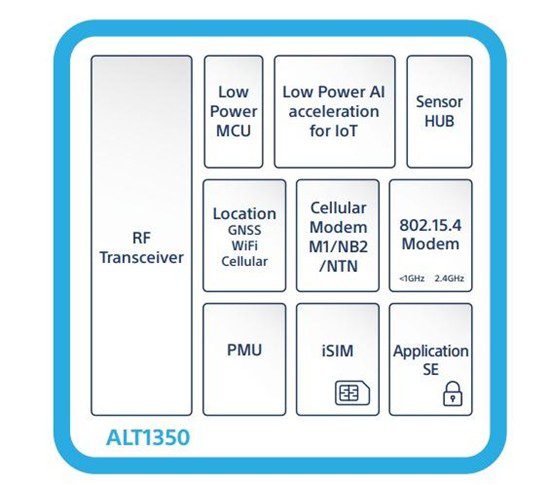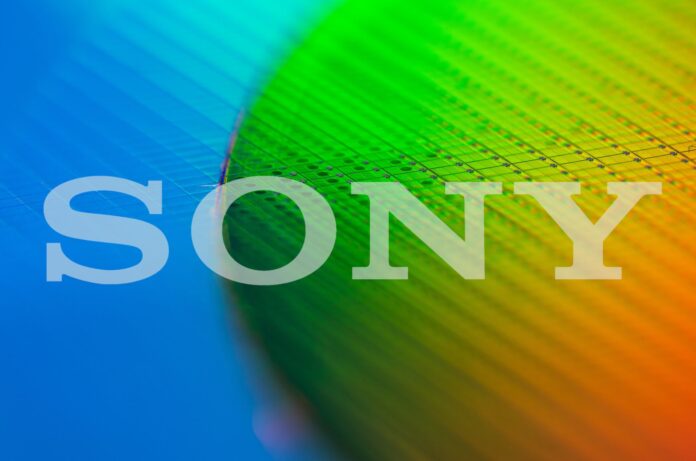Sony Semiconductor Israel has introduced a new dual-band low-power cellular IoT chipset solution which it claims is the “first” to combine the both LTE-M and NB-IoT in a single integrated modem. The new ALT1350 chipset also supports satellite (non-terrestrial; NTN) connectivity, plus cellular, satellite-GNSS, and Wi-Fi positioning, and includes an additional transceiver for IEEE 802.15.4-based protocols in sub-GHz and 2.4GHz ISM bands.
This low-power IEEE 802.15.4 facility covers Wi-Sun, U-Bus Air, and wireless M-Bus, for either point-to-point or mesh-based local-area sensor networking. The ALT1350’s microcontroller unit (MCU), AI acceleration, and sensor hub are all geared for low-power IoT operations, for low-power data collection and processing at the edge, in sensor devices and edge gateways. Sony Semiconductor called it the “most advanced cellular IoT solution on the market”.
The ALT1350 “resolves… power consumption concerns”, said the Israel-based firm, previously Altair, on the grounds it enables an optimized standby mode (eDRX) to reduce power consumption by 80 percent, overall, compared to current-generation cellular IoT units, and by 85 percent even in active mode, when sending short messages. It “power-optimized” concurrent LTE and GNSS positioning, to boot, for location accuracy and battery efficiency.
 It includes a secure element for application usage and integrated SIM (iSIM), which meets Eurosmart’s new PP-0117 protection profile, in line with GSMA requirements. Sony Semiconductor said: “Overall improvements in… power consumption will enable four times longer battery life for a typical device”. The unit is pitched at IoT tracking and monitoring cases in the utilities, logistics, transportation, and ‘smart cities’ markets.
It includes a secure element for application usage and integrated SIM (iSIM), which meets Eurosmart’s new PP-0117 protection profile, in line with GSMA requirements. Sony Semiconductor said: “Overall improvements in… power consumption will enable four times longer battery life for a typical device”. The unit is pitched at IoT tracking and monitoring cases in the utilities, logistics, transportation, and ‘smart cities’ markets.
The ALT1350 offers Release 15-level LTE-M/NB-IoT functions, and future compatibility with Release 17-level 5G networks. The device is currently being tested by customers, with a full commercial launch pegged for some time in 2023.
Nohik Semel, chief executive at Sony Semiconductor Israel, said: “The market demand for this multiprotocol, ultra-low power IoT chipset is intensifying, and Sony’s ALT1350 chipset meets that demand. This is the game changer we’ve been waiting for, which will enable IoT deployments, utilizing universal connectivity on edge processing and multiple location technologies”

